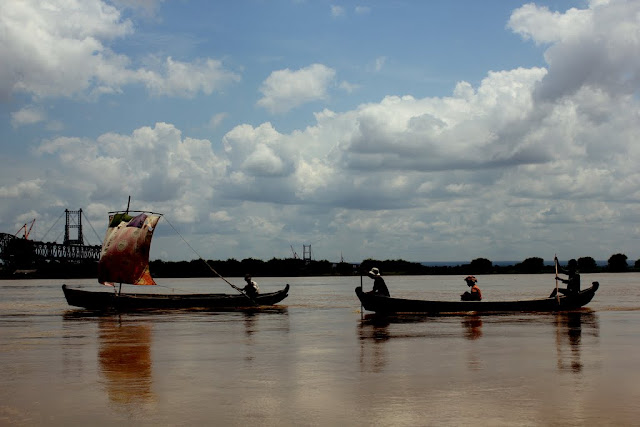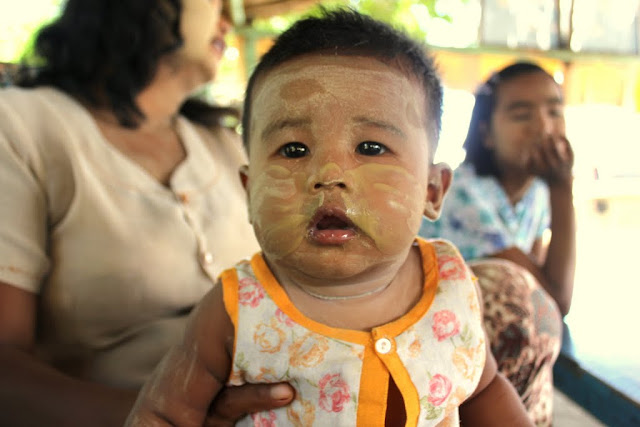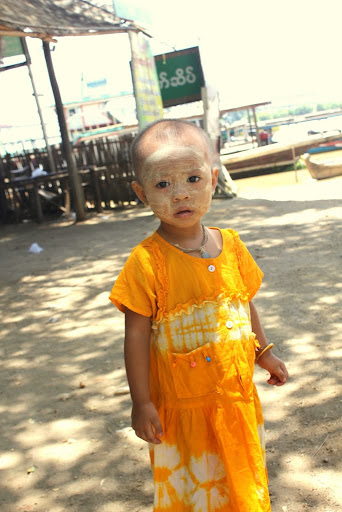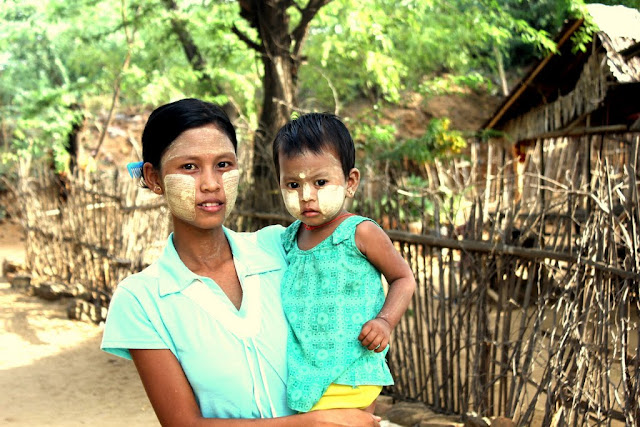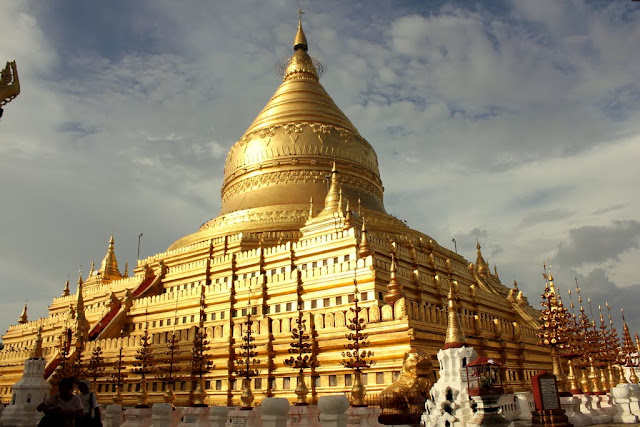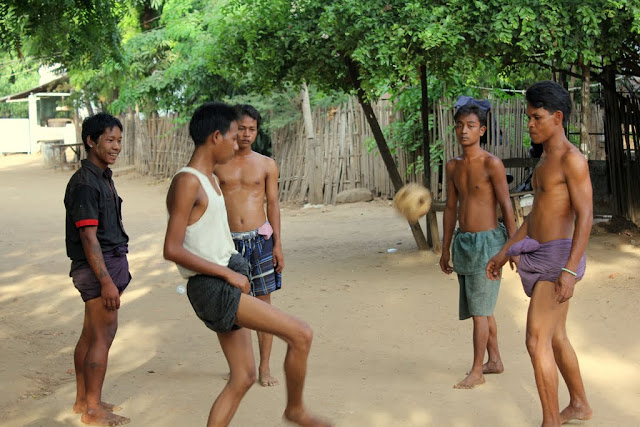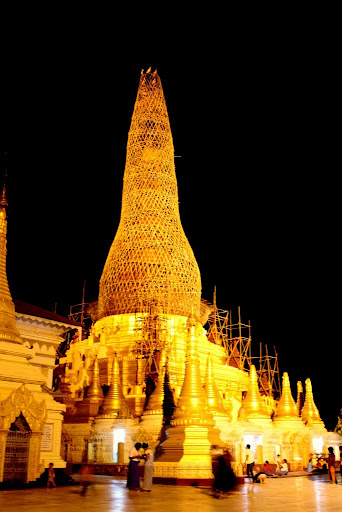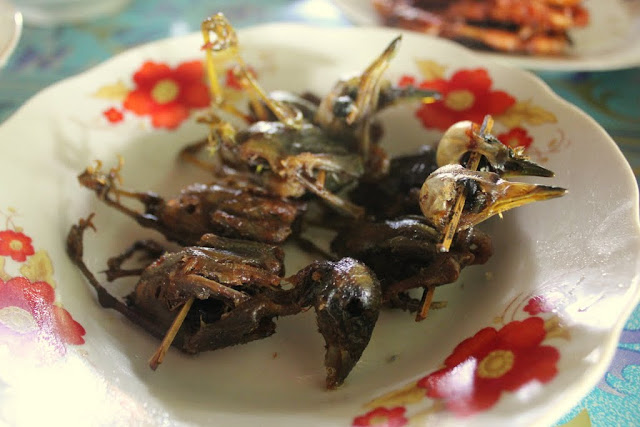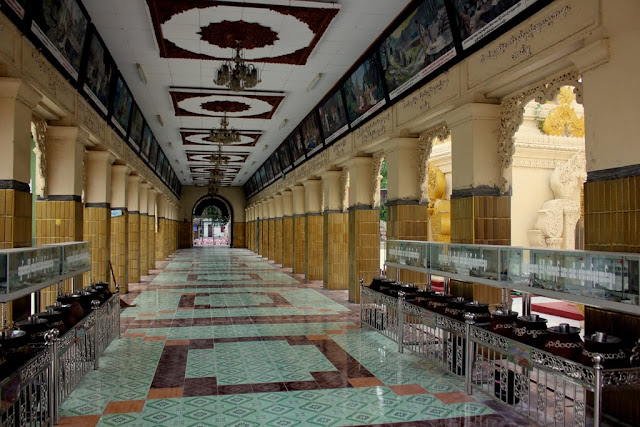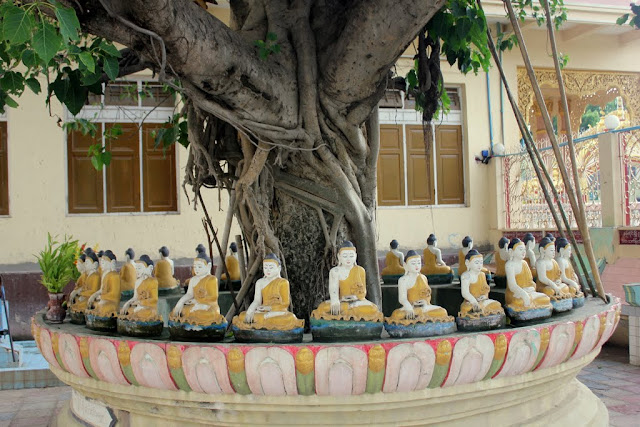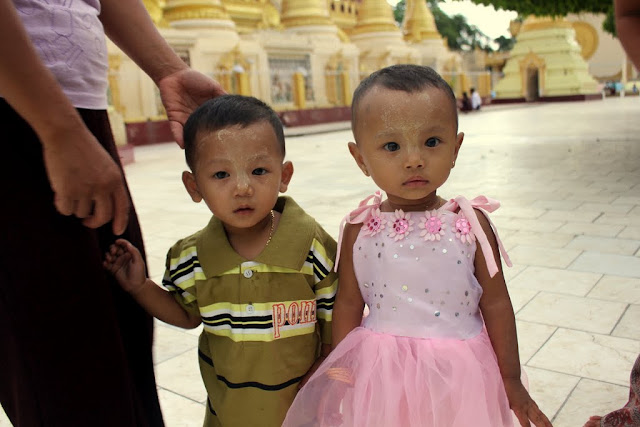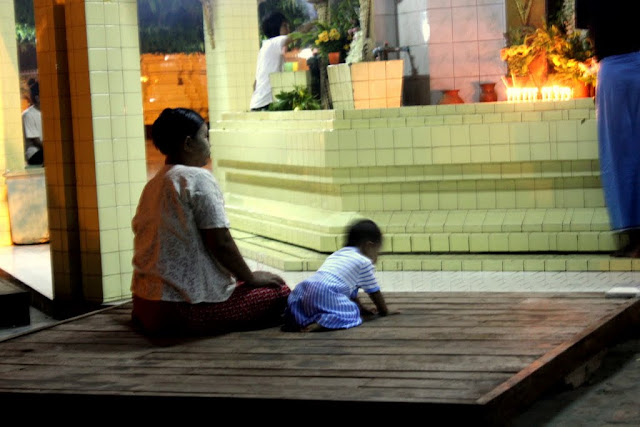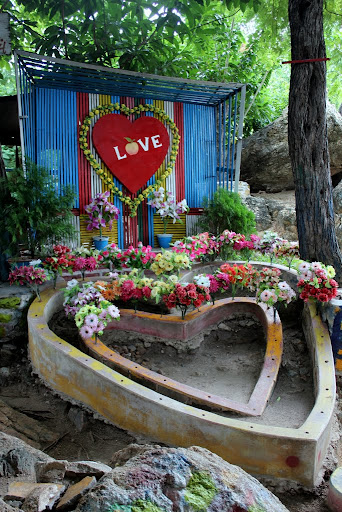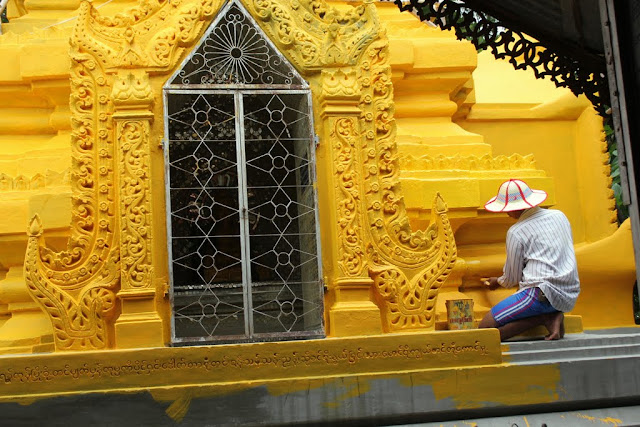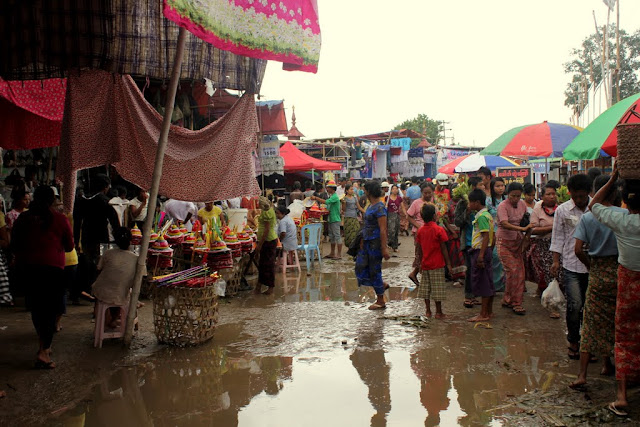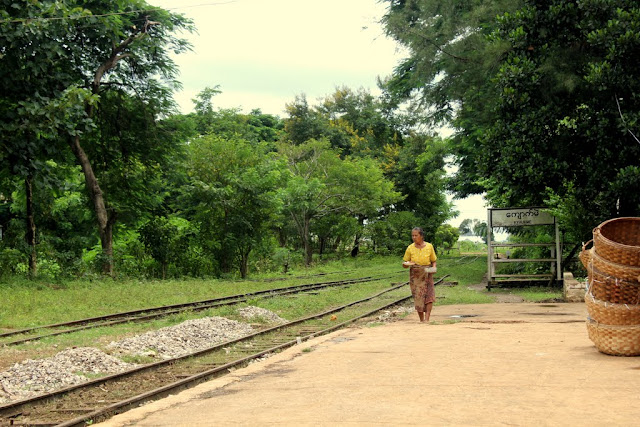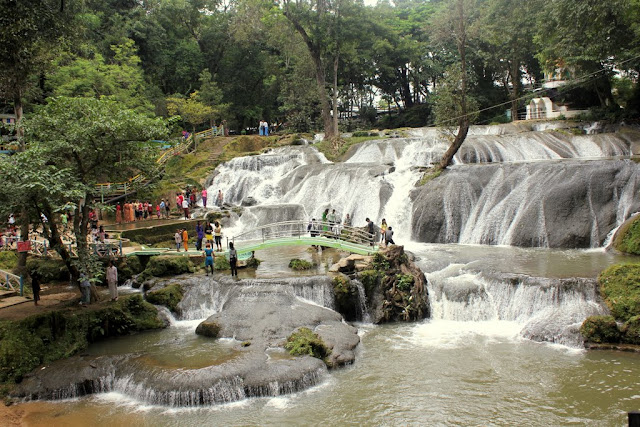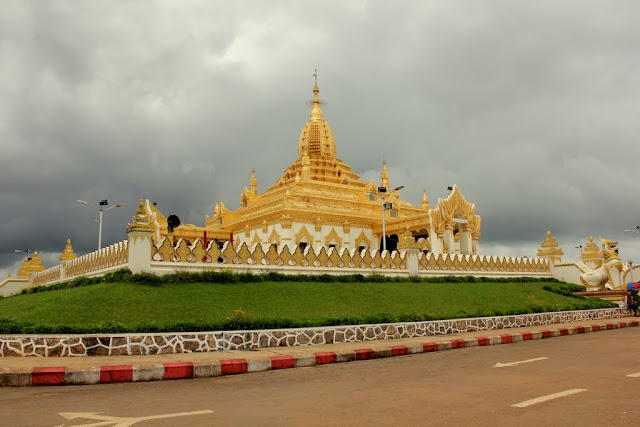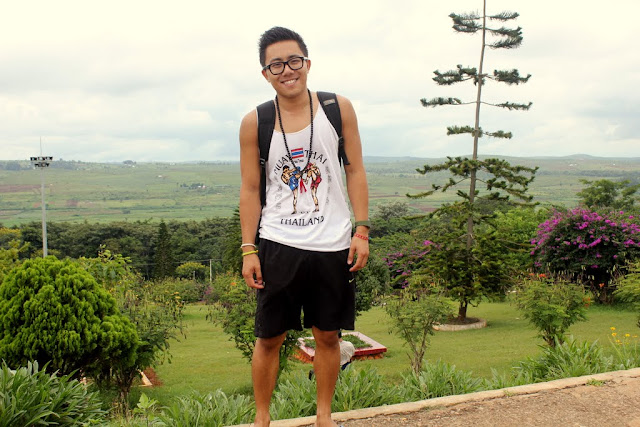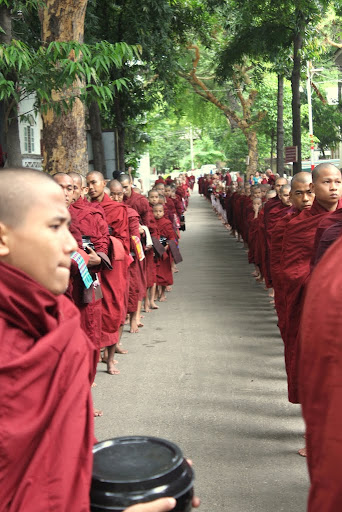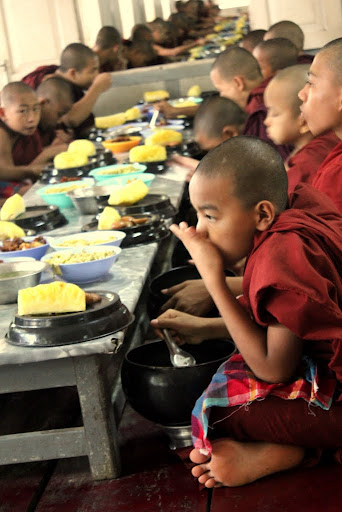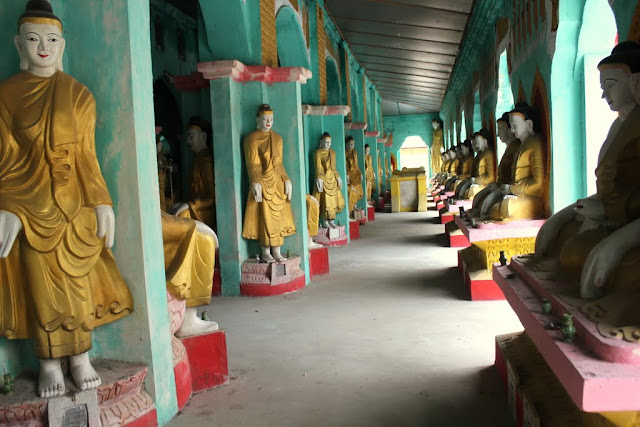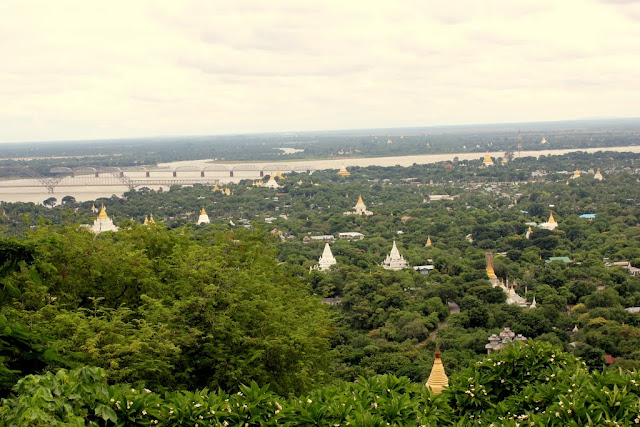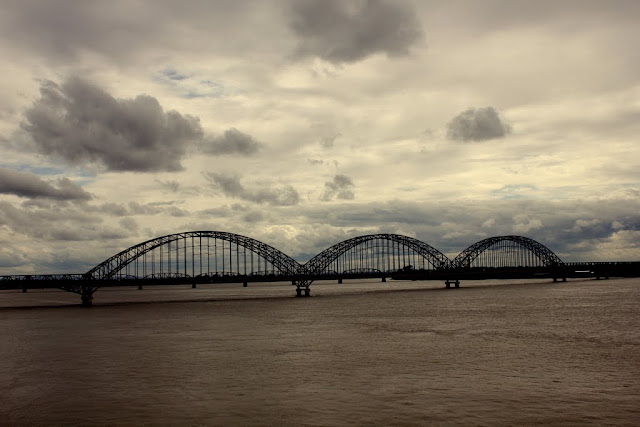I had the intention of heading to Hsipaw by train but met a couple of people from New Zealand who were headed to a town an hour away from my destination called Kyaukme. They told me wonderful stories about their hikes in Myanmar and were headed to this city to do some more hikes. I decided to join them since I think I'd probably be the only tourist in Hsipaw.
We took a 5 hour ride on the train, which provided lush views of the countryside, sometimes going at a snails pace, and sometimes going at faster speeds. One of the best parts of the trip was traveling on the Gokteik Viaduct, which was built in 1901 by the Pennsylvania Steel Company to get the train across the Gokteik Gorge. The viaduct was 318 feet high, and 2257 ft across (the second highest in the world at the time it was built), and the train runs at a slow enough speed to ensure that there isn't any undue stress on the railroad. Rumor has it that the insurance on the railroad expired about 50 years ago and very little maintenance has been done until recently to ensure that the viaduct doesn't collapse. I was initially scared (along with my Kiwi travel mate), but once I saw it, it wasn't as scary as when you read about it in a book and let your imagination run wild. It was actually quite thrilling to ride across and take pictures, with everyone on the train peering out the windows at the bottom of the gorge.
We arrived at Kyaukme after 5 hours on the train and headed to the only licensed guesthouse that could accept foreigners. Immediately, we were told by a trekking guide about the conflict that has been going on recently in the vicinity.
Fighting has been going on for the past 10 days. The trekking guide told us there was a bomb that went off outside the city on a highway and a gunshot was heard at 3am in the morning. Some local people have been killed as he has witnessed a couple funeral ceremonies already.
He said the Shan Army plans to take over this city in 19 days to recruit more people into the army.
All the different armies from different states (Kachin, Shan, etc.) are all fighting against the Myanmar Army for independence, democracy, a better government, better job opportunities, education, and the ability to travel outside the country. Our tour guide said if he had the chance, he'd be long gone and out of this country.
The fighting occurs every year, but he said it has really intensified this time around. Treks around the area were not advised since the Shan Army could easily shoot and kill anyone around the area. Or they could kidnap foreigners and hold them for ransom. They don't have as much pressure to keep foreigners out of harm compared to the Myanmar Army. It's kind of ironic how we have compassion and understand the goals of these rebel armies, yet we rely on the Myanmar Army to keep us safe. Who do we support when we are close to the crossfire?
The tour guide was actually surprised that we were even allowed on the train headed northeast with all the fighting going on. We saw a military presence at the train stations, but nobody told us to turn back.
Although it wasn't advised for us to go hiking, it was still exciting to think of the possibility of actually doing it, knowing that we were in a sort of battlezone. It would probably be the stupidest thing you could decide to do, but at the same time, a part of you (the irrational adrenaline-junky part) is telling you to do it! You read so many stories of tourists who were at the wrong place at the wrong time and all you think about is how stupid they are, but sometimes, your irrational mind takes a hold and you just want to risk it.
For us, we decided we would take the train back tomorrow since it was really uncertain when the fighting would occur or where it would lead to next. Everything was uncertain, and the best thing to do would be to leave while you could, because things could change at any moment, any day. The way out of the city might not be an option if you stayed another day. I guess I should have listened to the receptionist at the hotel and headed back to Mandalay afterall.
Riding on the Gokteik Viaduct
The quaint town of Kyaukme
New Kiwi friends, Nick and Anna
Chapati for Dinner
